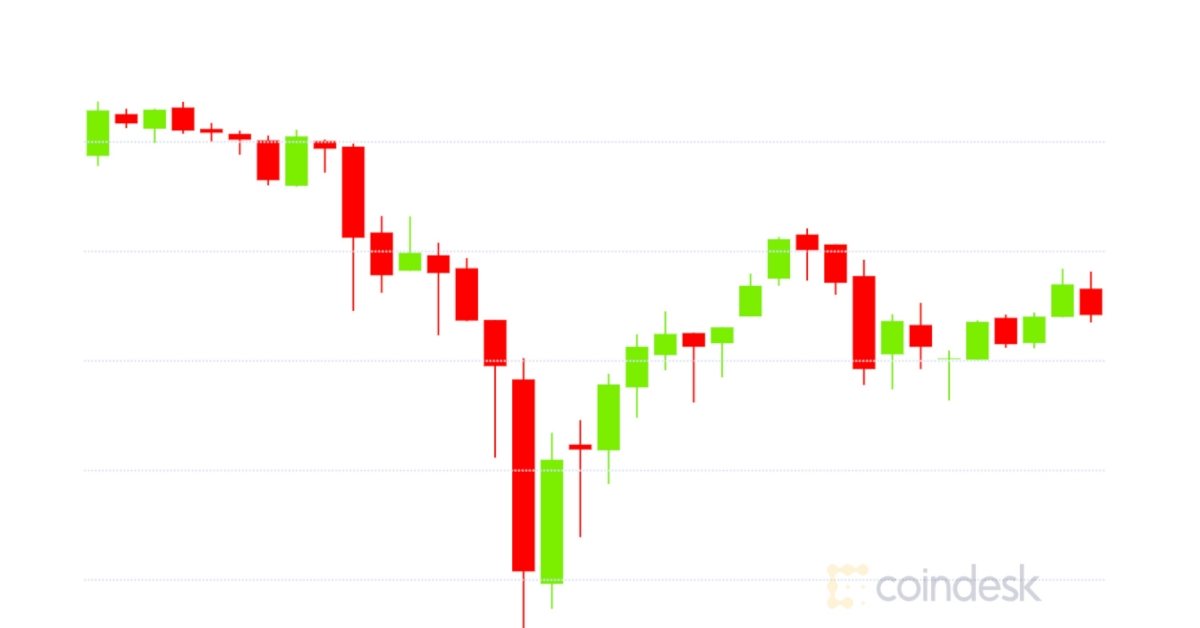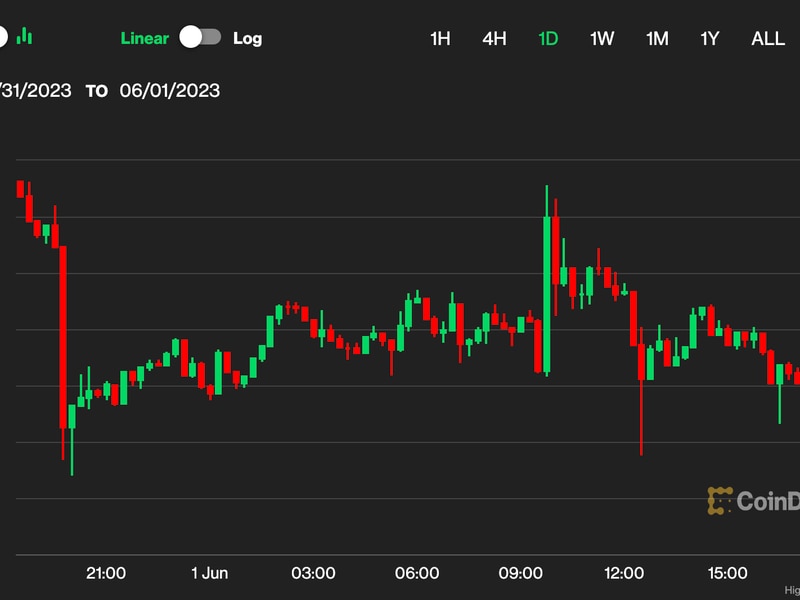Blockchain Bites: Bitcoin on Ethereum – The Whos, Whats and Whys
Since January, over $1.5 billion worth of bitcoin has been tokenized into ERC-20 tokens to use in the emerging decentralized finance (DeFi) ecosystem on Ethereum. These DeFi applications offer an increasingly large array of potential use cases for bitcoin investors looking for alternative ways to issue loans or make trades on new exchange platforms.
Tokenizing bitcoin serves as a bridge between these two leading cryptocurrency communities and an important step forward for traders and investors taking advantage of the features offered by both blockchains. Through tokenized bitcoin projects, the powerful monetary properties of bitcoin can be leveraged in the ever-growing collection of Ethereum-based cryptocurrency applications.
CoinDesk is preparing for the invest: ethereum economy virtual event on Oct. 14 with a special series of newsletters focused on Ethereum’s past, present and future. Every day until the event the team behind Blockchain Bites will dive into an aspect of Ethereum that excites or confuses us. Today’s intro is written by CoinDesk reporter Zack Voell.
Tokenized bitcoin also revives an age-old discussion on the merits of decentralization versus convenience. Some projects like Thesis’ tBTC project prioritizes decentralization while others, like the industry-leading wrapped bitcoin (WBTC) project by BitGo emphasizes convenience through a central custodian for all tokenized coins.
To date, seven different projects offer bitcoin tokenization services, and that list is likely to grow along with demand for more bitcoin-backed ERC-20 tokens. As the amount of tokenized bitcoin grows, the importance of each project’s security and reliability becomes even more important as does the continued development of Ethereum-based applications that pique the interest of tokenized bitcoin holders.
It’s a topic of conversation likely to be covered by CoinList and BitGo representatives when speaking on the virtual panel Unlocked: BTC on Eth: Having Your Cake and Eating It, Too at invest: ethereum economy this coming Wednesday.
Featured panel
The Fees Are Too Damn High: DeFi Pushes Ethereum to Its Limit
Ethereum has delivered many mind-boggling innovations – some by design, others out of necessity. With DeFi pushing the ecosystem, existing infrastructure is being maxed out. Can Eth 2.0 address these pain points? Is this the opportunity for so-called “Eth Killers”?
MakerDAO’s Rune Christensen will assess this critical fork in the road along with representatives from NEAR Protocol and Framework Ventures at invest: ethereum economy. Tune into “The Fees Are Too Damn High: DeFi Pushes Ethereum to Its Limit,” on Oct. 14 starting at 9:30 a.m. ET.
Ethereum 101
To the surprise of many, bitcoin has been a breakout star in Ethereum’s decentralized finance (DeFi) moment. Taking the form of wrapped or tokenized bitcoin, the digital asset takes the best of both blockchains – bitcoin’s price value and brand along with Ethereum’s programmability – into one highly in-demand token.
CoinDesk tech reporter Will Foxley breaks down the mechanics behind these tokenized versions as well as the reasons investors would want to trade representations of BTC on a competing blockchain.
Why use tokenized BTC?
What bitcoin on Ethereum does is simple: It provides liquidity for growing decentralized exchanges (DEX), such as Uniswap. Bitcoin’s current market cap is five times larger than the second largest cryptocurrency, ether (ETH). That money can be put to use making more money.
Tokenized bitcoin allows investors to bring large amounts of value over to the Ethereum network and its young DEX market in a few clicks.
DeFi is considered vastly immature when compared to traditional or centralized exchange (CEX) markets. This can be seen in the large price spreads between orders on exchange books between different DeFi markets.
Price differences on markets can be exploited by traders in what is called arbitrage opportunities.
Wrapped bitcoin is often the asset of choice for investors seeking arbitrage. Bitcoin packs a large punch in terms of price value. More money on DeFi trading platforms makes the markets themselves stronger as additional buying and selling options are presented.
But tokenizing bitcoin isn’t without risks, particularly software risk. Investors who want exposure to bitcoin’s liquidity pay higher interest rates to cover the risk of losing an asset in addition to getting exposure to the first cryptocurrencies liquidity.
Security of bitcoin investments
For tokenized bitcoin, security boils down to the type of custodianship and if the investment is collateralized. Three major models exist: a centralized firm like BitGo; a smart contract system with collateral, such as tBTC; or a complete, synthetic-asset backing employed by sBTC.
BitGo’s centralized model requires users to give the custodian BTC to receive an ERC-20 token-equivalent of BTC in return. That ERC-20 can then be sold on secondary markets or plugged into a DeFi application to earn yield.
Keep Network’s tBTC, which launched last month, is similar to WBTC but replaces the centralized BitGo model with a network of nodes, wallets and smart contracts. This network aims at bringing more decentralization to BitGo’s process by allowing both parties – the bitcoin depositor and custodian – to interact trustlessly through software.
A few features make this possible, such as the bitcoin depositors being able to choose who holds their bitcoin and a 150% security bond (held in ETH) pledged by the custodians on the off-chance they run to the hills with the deposits.
Ren’s rBTC works in a similar manner to tBTC’s node network by having the Ren Virtual Machine, RenVM, act as a trustless agent between the Bitcoin and Ethereum blockchains.
Lastly, sBTC is an ERC-20 version of bitcoin. But this time it’s backed by another token, the Synthetix Network Token (SNX). Each sBTC is not backed by BTC, but 800% of a BTC’s value in SNX, the token for minting synthetic assets (Syns) on the Synthetix DEX.
The future of tokenized assets
The wild success of BitGo’s WBTC and WETH (wrapped ether) may lead to more constructions of other coin holdings. Ben Chan, CTO at WBTC co-creator BitGo, told Coindesk in August that the firm was looking at wrapping other cryptocurrencies.
WBTC’s 2020 success has largely been thanks to DeFi, he said.
“What we’ve seen this year is that WBTC traction has been largely thanks to the highly composable DeFi industry,” Chan said.
The ledger
CoinDesk Chief Content Officer Michael Casey took on the theme of wrapped bitcoin in his weekly newsletter, Money Reimagined, last June. According to Casey, tokenized bitcoins bring not only value and legitimacy to a burgeoning decentralized financial ecosystem, but also security.
Likewise, Ethereum provides a clear path towards returns for tokenized bitcoin users, willing to take on extra risk.
DeFi double act
Tensions between the Bitcoin and Ethereum tribes have been stirred by a trend outsiders might see as a sign of harmony. Beneath the rivalry that plays out primarily on Crypto Twitter, the bitcoin-on-Ethereum trend says more about complementarity than competition.
The growth of tokenized representations of BTC highlights that bitcoin is the crypto universe’s reserve asset and that Ethereum’s burgeoning “DeFi” ecosystem is crypto’s go-to platform for generating credit and facilitating fluid exchange.
Real-world parallels
This trend captures the early beginnings of a new, decentralized global financial system. An analogy: Bitcoin is the dollar, and Ethereum is SWIFT, the international network that coordinates cross-border payments among banks. (Since Ethereum is trying to do much more than payments, we could also cite a number of other organizations in this analogy, such as the International Swaps and Derivatives Association or the Depository Trust and Clearing Corporation.)
So, let’s dismiss claims like those of Ethhub.io co-founder Anthony Sassano. He argued that because bitcoin token transactions on Ethereum deny miners fees they would otherwise receive on the bitcoin chain, bitcoin is becoming a “second-class citizen” to ether. You’d hardly expect people in countries where dollars are preferred to the local currency to think of the former as second class. And just as the U.S. benefits from overseas demand for dollars – via seigniorage or interest-free loans – bitcoin holders benefit from its sought-after liquidity and collateral value in the Ethereum ecosystem, where it lets them extract premium interest.
Still, to declare bitcoin the winner based on its appeal as a reserve asset is to compare apples to oranges. Ether is increasingly viewed not as a payment or store-of-value currency but for what it was intended: as a commodity that fuels the decentralized computing network orchestrating its smart contracts.
That network now sustains its financial system, a decentralized microcosm of the massive traditional one. It takes tokenized versions of the underlying currencies that users most value (whether bitcoin or fiat) and provides disintermediated mechanisms for lending or borrowing them or for creating decentralized derivative or insurance contracts. What’s emerging, albeit in a form too volatile for traditional institutions, is a multifaceted, market for managing and trading in risk.
This system is being fueled by a global innovation and development pool bigger than Bitcoin’s. As of June of last year, there were 1,243 full-time developers working on Ethereum compared with 319 working on Bitcoin Core, according to a report by Electric Capital. While that work is spread across multiple projects, the size of its community gives Ethereum the advantage of network effects.
Whether DeFi can shed its Wild West feel and mature sufficiently for mainstream adoption, the code and ideas generated by these engineers are laying the foundation for whatever regulated or unregulated blockchain-based finance models emerge in the future.
Complexity vs. simplicity
There are legitimate concerns about security on Ethereum. With such a complex system, and so many different programs running on it, the attack surface is large. And given the challenges the community faces in migrating to Ethereum 2.0, including a new proof-of-stake consensus mechanism and a sharding solution for scaling transactions, it’s still not assured it will ever be ready for prime time.
Indeed, the relative lack of complexity is one reason why many feel more comfortable with Bitcoin Core’s security. Bitcoin is a one-trick pony, but it does that trick – keeping track of unspent transaction outputs, or UTXOs – very well and very securely. Its proven security is a key reason why bitcoin is crypto’s reserve asset.
Toward anti-fragility
The inclusion of bitcoin in Ethereum smart contracts is inherently strengthening the DeFi system.
Decentralized exchanges (DEXs), which allow peer-to-peer crypto trading without centralized exchange (CEX) taking custody of your assets, have integrated WBTC into their markets to boost the liquidity needed to make them viable.
Meanwhile, the move by leading DeFi platform MakerDAO to include WBTC last spring in its accepted collateral has meant it has a bigger pool of value to generate loans against.
This expansion in DeFi’s user base and market offerings is in itself a boost to security. That’s not just because more developers means more code vulnerabilities are discovered and fixed. It’s because the combinations of investors’ short and long positions, and of insurance and derivative products, will ultimately get closer to Nassim Taleb’s ideal of an “antifragile” system.
That’s not to say there aren’t risks in DeFi. Many are worried that the frenzy around speculative activities such as “yield farming” and interconnected leverage could set off a systemic crisis.
If that happens, maybe Bitcoin can offer an alternative, more stable architecture for it. Either way, ideas to improve DeFi are coming all the time – whether for better system-wide data or for a more trustworthy legal framework.
Out of this hurly-burly, something transformative will emerge. Whether it’s dominated by Ethereum or spread across different blockchains, the end result will show more cross-protocol synergy than the chains’ warring communities would suggest.
At stake
Matt Luongo, founder of cryptocurrency venture production studio Thesis, wrote an op-ed discussing the similarities between “stacking sats” and decentralized finance. While hardnose bitcoiners may see DeFi as a distraction, Luongo thinks they should rethink their assertions.
The article, published Oct. 1, is excerpted below.
Staking sats?
Bitcoin’s usefulness and grounding as hard money set it apart from most of the crypto froth from the past several years. The ocean of Ethereum white papers produced has yielded comparatively few working projects, and even fewer that anyone outside the crypto world would call usable.
Regardless of Bitcoin’s advantages, I am on record saying that I am a monetary maximalist, not a Bitcoin maximalist. I believe finance is a human right, just like speech and assembly, and that we need a fair and transparent financial system that empowers individuals, not powerful middlemen. So while I believe in the soundness of Bitcoin and its ability to help reshape finance, I will support any project that furthers this ultimate vision for a new economic system.
The fact that Ethereum is not Bitcoin, that it has consistently driven hype and bubbles, and that it still has not found a workable long-term solution for scalability, does not mean it offers nothing of value. In fact, Ethereum’s top DeFi platforms are doing some truly exciting and innovative work, and they have the promise to further the cause of a decentralized future of money.
MakerDAO operates like a credit facility, driving liquidity and encouraging more lending when interest rates are low. Compound, with its developer-focused interest rate protocols, enables the savings and loan functions of traditional banks. In more arcane spheres, projects like Synthetix offer a version of derivatives trading. Together, these platforms represent the germ of a new financial system.
Projects with names like $YAM and $TENDIES do not inspire confidence, I know. But dig a little into what DeFi is and does, and the foundations that have been laid, and you’ll be pleasantly surprised. DeFi is very real, and it’s worth exploring and explaining.
Stacking sats is about steadily, gradually, doggedly accumulating wealth over time. And DeFi is in the same spirit when properly implemented (never a sure thing in the Ethereum community). It’s basic finance: DeFi lets people do things they already do through banks, mutual funds and other financial institutions. But done right, it offers these services in a way that’s fairer, more transparent and more rewarding. So it’s not an exaggeration to say that DeFi is an ally in achieving a vision it shares with Bitcoin: a trustless world of democratized, self-sovereign finance.
It would be myopic and self-defeating to ignore the potential of DeFi to advance a goal that is, after all, shared by all of us. It would be even more self-defeating to ignore real opportunities to put money to work, like when there’s a way for BTC holders to earn through cross-chain bridges like tBTC.
As Bitcoiners, we will always believe in the importance of sound money and in the Bitcoin blockchain as the best technology to facilitate it. There is plenty of risk in Ethereum and in DeFi. Potential investors must always do their due diligence. But I’m here to tell you that DeFi is for real. It’s a bubble, but it’s not just another bubble. And although there absolutely are “DeFi” platforms that will crash and burn, many of the concepts are sound. There are real opportunities for people to earn by putting their money to work – and where that’s true, investment and growth will follow.
Top shelf
Extortion claims
Local government premises in Japan have been hit by a flood of extortion attempts demanding bitcoin. According to a report by Japan Today on Monday, such threats have been received in at least 18 prefectures since July. The extortionists reportedly demand a payment in bitcoin to avoid the detonation of an explosive device in various public buildings, from schools to hospitals, though none of the Japanese victims have paid the extortionists, per Japan Today. Austria has also suffered a spate of similar bomb threats.
Compliance hire
BitMEX, the cryptocurrency derivatives exchange recently charged by U.S. authorities, has hired an industry veteran to lead its compliance efforts going forward. In a blog post Monday, the exchange’s operator 100x announced that experienced compliance officer Malcolm Wright will come aboard, reporting to the firm’s interim CEO and COO Vivien Khoo. This follows after news broke of a dual agency investigation into the firm for allegedly operating an unlicensed trading services.
Musk denies
Elon Musk has thrown doubt on a claimed sighting of a bitcoin ATM at the Tesla Gigafactory in Nevada. Twitter user Will Reeves claimed on Sunday that he had “just passed by and saw @elonmusk has a bitcoin ATM at the Gigafactory.” The tweet was accompanied by a Google maps image revealing the location of the ATM on the northern side of the factory complex. Tesla founder and CEO Elon Musk said he didn’t believe the claim was “accurate” in a tweet on Monday. Bitcoin ATM firm LibertyX confirmed with CoinDesk it has installed three “traditional ATMs” on site “so employees can use their debit cards and buy bitcoin.”
Little impact
The U.K. Financial Conduct Authority’s decision to ban individual investors from speculating on bitcoin and other cryptocurrencies is likely to have a minimal impact, partly because the market is so small, according to analysts and industry executives who track the trading business. Some U.K.-based brokerages that had offered the crypto derivative products to retail traders could see a drop-off in revenue, though big cryptocurrency exchanges including Kraken say the impact is likely to be minimal. While U.K. individuals can still trade the actual cryptocurrencies.
Digital yuan
Chen Yulu, deputy governor of China’s central bank, said in an article at the weekend that the digital yuan project should form an “independent” and “high-quality” element of the nation’s financial infrastructure, South China Morning Post reports. Chen added that R&D for the digital yuan should proceed at a faster pace, while pilots should show the CBDC is “controllable and safeguards the security of payments.” Last week, the city of Shenzhen, together with the central bank, launched a kind of lottery allowing local residents to apply for some of 10 million digital yuan that will be handed out.
Quick bites
Who won #CryptoTwitter?











